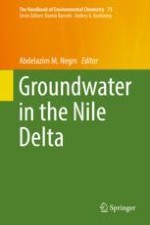2019 | OriginalPaper | Buchkapitel
Soil Aquifer Treatment System Design Equation for Organic Micropollutant Removal
verfasst von : Ahmed M. Abdel Sattar, Hossein Bonakdari, Abdelazim Negm, Bahram Gharabaghi, Mohamed Elhakeem
Erschienen in: Groundwater in the Nile Delta
Aktivieren Sie unsere intelligente Suche, um passende Fachinhalte oder Patente zu finden.
Wählen Sie Textabschnitte aus um mit Künstlicher Intelligenz passenden Patente zu finden. powered by
Markieren Sie Textabschnitte, um KI-gestützt weitere passende Inhalte zu finden. powered by
